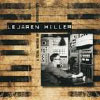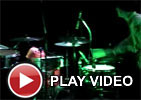Lejaren Hiller, "A Total Matrix of Possibilities"
 It is doubtful whether a majority of today's current crop of laptop musicians would recognize the name of Lejaren Hiller (1924-1994). It is however, certain, that he was a key figure in the genesis of computer music. A lifelong student of music who was a chemist by profession, he succeeded in bridging the gap between scientific inquiry and the world of sound. After working for Dupont he joined the faculty at the University of Illinois where his research involved the Iliac 1, the first computer to be owned by an academic institution. He realized that the chemical probability processes he was investigating could be applied to music, resulting in the first composition to be written with the aid of a computer, much to the ire of the 1958 musical establishment.
It is doubtful whether a majority of today's current crop of laptop musicians would recognize the name of Lejaren Hiller (1924-1994). It is however, certain, that he was a key figure in the genesis of computer music. A lifelong student of music who was a chemist by profession, he succeeded in bridging the gap between scientific inquiry and the world of sound. After working for Dupont he joined the faculty at the University of Illinois where his research involved the Iliac 1, the first computer to be owned by an academic institution. He realized that the chemical probability processes he was investigating could be applied to music, resulting in the first composition to be written with the aid of a computer, much to the ire of the 1958 musical establishment.
While the Iliac Suite is not included on this release, it does contain three key works from the period of 1963 to 1974, very fertile years for the composer, who continued to pursue his creative vision unabated by the negative press that attended the world’s first computer aided composition. The three pieces exhibited show off his interest in the use of information theory and ability and comfort in writing for multiple forms such as studio prepared magnetic tape with vocalists, chamber ensemble with computer, and string quartet.
The title of the collection refers to Hiller’s working procedure, best stated in his own words: “I certainly use tonal methods, serial methods, of course, chance methods, charts, mathematical formulas like Fibonnaci series, eye music –you name it. And all of this with or without computers and electronics. But again I say that I try all of them in what you might call a total matrix of possibilities.”
“Computer Cantata” is split into five sections and starts off with a bang of rackety meandering percussion, like a drum corps on nitrous oxide. Eventually petering out into mainframe blips, bleeps, and fuzz, a soprano’s wavering voice emerges in the middle, acting as a focal point as the drums fade back in and vacuum-tube tones zigzag back and forth between the speakers. All the while horns and violins dance around with each other playfully and chaotic. The third section begins and ends with unaccompanied computer noise, what I imagine it must have sounded like in the old Ma Bell telephone switching stations.
“Quartet No. 6 for Strings” is an exuberant affair and perhaps the most accessible on the disc to the casual listener. The three sections of the quartet are based on environmental sound patterns he took notes on and then categorized: commercial district and industrial sounds; placid and peaceful sounds; and cheerful sounds such as children playing or those from Saturday morning cartoons. He then further defined them by applying a whole slew of chance processes and then imposing various constraints regarding pitch and other elements.“A Portfolio for Diverse Performers and Tape” is by far the most esoteric piece collected here. Commissioned by Polskie Radio in Warsaw the eight-channel tape features children’s songs sung by his daughter and son, making it at times eerie and scary. If the operatic singing were deleted from the mix it would come very close to a Nurse With Wound piece. It would be very appropriate to play on Halloween, sitting on the porch passing out candy to kids. It also contains sounds that are comical and sourced from who knows where. Trilling kazoos emerge from a resonant abyss.
I would have liked to seen more photographs in the liner notes, of Hiller, of the various performers, of the computers and studios where the works were created, and of the notebooks in which the ideas were sketched out. Perhaps those who put this together did not have access to them, or maybe their budget didn’t allow for them to be included. On many of the other archival releases from New World Records such images have been included. Hopefully though, what this release will have done is to take a step towards restoring Lejaren Hiller’s place in the history of music; from that of a footnote in books on ambient and computer music to a place of honor for his unique prolific genius.
samples:



